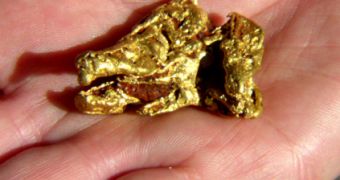Gold has always been a major fuel for humans' imagination, oft-present in their tales, from legends and children's stories to serious novels, stressing on the importance of the glittering material associated with the difference between rich and poor. The Incan, who built vast cities of gold, referred to it as the "sweat of the sun," while Egyptian pharaohs required to be buried in the "flesh of the gods". Since the most ancient of times, searching for the metal has not stopped.
Gold helped shape currencies, empires and wars, determining the fate of many, from the rulers of old to the forty-niners hoping to find the mother lode, actually the miners that built the wild American west. But the shiny material is not indispensable to life. Quite the contrary, it possesses little practical value, mostly related to its peculiar density, malleability, conductibility and resistance to aging. But this glimpse of beauty and immortality caused humans to over appreciate it and start wars over it, either among themselves or with nature itself.
Surprisingly, there's very little gold in nature – in fact, the total gold mined worldwide up to date could barely fill two Olympic pools: 161,000 tons, over half being extracted in the last five decades – and the constant human rush has nearly depleted the natural reserves. The large deposits and nuggets, as well as the discovery of new lodes are now very scarce and limited to remote regions of the world, such as La Rinconada, in Peru, where an increase by 235% in the price of gold has attracted more than 30,000 prospector wannabes.
This is the gold rush of the new millennium, a drama that shows thousands of people driven by despair or greed, not caring about their lives or the environment. The United Nations Industrial Development Organization (UNIDO) states that there are about 10-15 million artisanal miners worldwide, from Mongolia to Brazil, who still use rudimentary mercury techniques to produce some 25% of the total gold. The deadly mercury separates the gold from rocks, but it is poisonous, both in liquid and gas forms, and around 30% of the mercury in the environment comes from the gold miners.
The rest of the gold is obtained by big mining companies, using giant machineries to extract it from open-pit mines. But there is too little material for such an important damage to the environment. The holes the companies drill in the Earth can be seen from space, but the particles extracted from it can sometimes fit on a pinhead. The gold required for a wedding ring, for instance, requires dislodging over 250 tons of rock. And no environmentally-oriented effort that these companies claim to make can match their destructive power. As in the past, there is too little good that comes from gold to make it worthwhile.

 14 DAY TRIAL //
14 DAY TRIAL //